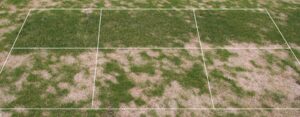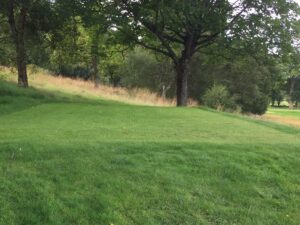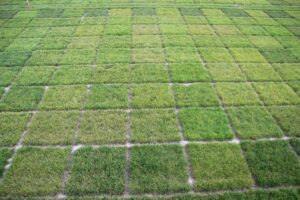A grass for all seasons – understanding tetraploid technology
Related Articles
Golf course demand for a new generation of amenity tetraploid perennial ryegrass is high at the moment, particularly because of its tolerance to stress. Here, Jayne Leyland, from Origin Amenity Solutions, explains what it is and why it is extraordinary.
A new generation of amenity tetraploid perennial ryegrasses offer exceptional qualities for golf course tees and the general area. With proven benefits such as cold temperature growth, fast recovery, high root mass and superior stress tolerance, how and why are they so exceptional?
Ploidy – refers to the number of complete sets of chromosomes within the nucleus of each plant cell. Perennial ryegrasses bred for amenity use were all historically diploids, meaning two paired sets of chromosomes within each cell. Tetraploids have four paired sets of chromosomes, for example chloroplast, and this physiological doubling of chromosomes explains how tetraploids deliver enhanced performance benefits.
Energised – increased cellular chloroplast benefits the plant by boosting chlorophyll production for energy absorption and processing. The outcome is a high energy, robust, hard-wearing, healthier plant with improved stress tolerance and recovery capability, even in cooler temperatures.
Robust development – a tetraploid cultivar begins its journey as seed selected from an amenity diploid cultivar with desirable characteristics. A few grams is treated with a natural plant hormone (colchicine) which doubles the chromosomes. The resultant tetraploids produce larger, high-energy seeds from which plants are grown and multiplied in isolation. It may take several generations of tetraploid offspring to yield stable, viable seed for use in field testing. Potential new cultivars are pushed to the limit and vital characteristics such as growth habit, wear, disease and drought tolerance, mowing height and visual merit are assessed. Only one or two cultivars from early selections make it through this rigorous process and those successful candidates must conform to DUS protocols, that being distinct, uniform and stable. Ongoing research into the benefits of tetraploids continues at Origin Amenity Solutions Research Centre. Ask us about the outcomes!
In the dark – Double chloroplast also increases tetraploids’ capability to harness relatively more light, beneficial where light quality is poor such as overcast conditions, shorter day length and in shade where temperatures are relatively cooler. Origin Amenity Solutions breeding partner Top Green routinely assesses all tetraploid cultivars in a shade and wear trial under reduced light levels at the Research Station in France. And on golf courses, R25CRT with both tetraploid and creeping ryegrasses is proven on shaded tees.

Tetraploids on the back row and diploids on the front row; Increased tolerance to Microdochium disease
Cool performers – Tetraploids germinate and establish faster than diploid ryes, even in cold soil temperatures from just four degrees Celsius! High energy seed, superior winter wear and robust re-growth helps maintain grass cover on tees, pinch points on fairways and grass walkways throughout the challenging winter season with regular divotting. The ultimate cold mix is R314 Rye, a blend of amenity tetraploid and annual ryegrasses for use during the winter to “keep it covered”.
Fast establishment is a major benefit not only during the winter months but any time of year. Under such intense wear pressure, the speed of emergence and high root mass helps restore a surface in the shortest possible time, making 4Tetra, R140 and Super Root perfect options for divotting, repairs and renovation throughout the year.
Hot stuff – High root mass and deep rooting means tetraploids deliver greater drought tolerance and stability. Vital for heat survival, they are the first and fastest to recover from a prolonged period of heat and drought stress, an ideal choice for free-draining soils and sites exposed to full sun or without irrigation. For example, R6CRT includes tetraploid rye plus hard and creeping red fescues to produce a dense, hard-wearing sward with great recovery from heat and drought.
Toughen up – High disease pressure can be devastating to the performance and visual qualities of the playing surface. Selecting cultivars with high disease tolerance is an important part of an integrated management approach. Whilst selected cultivars can provide degrees of tolerance but not resistance, the official testing programme for the GEVES European Turf Testing Programme hilights great tolerance in tetraploids to common turf diseases such as microdochium patch, red thread and rust diseases.
Go-to choice
Whilst a relatively recent introduction the use of tetraploids for construction, renovation and repair of grass surfaces has rocketed. Their dramatic rise is fundamentally down to proven performance and flexibility for wide-ranging applications right throughout the year. Blended with diploid ryegrasses or mixed with fescues they are reliable performers that always deliver.
For more information on the extended choice of R Range tetraploid technology mixes for your course, contact Origin Amenity Solutions on 0800 138 7222 or visit www.originamenity.com




























